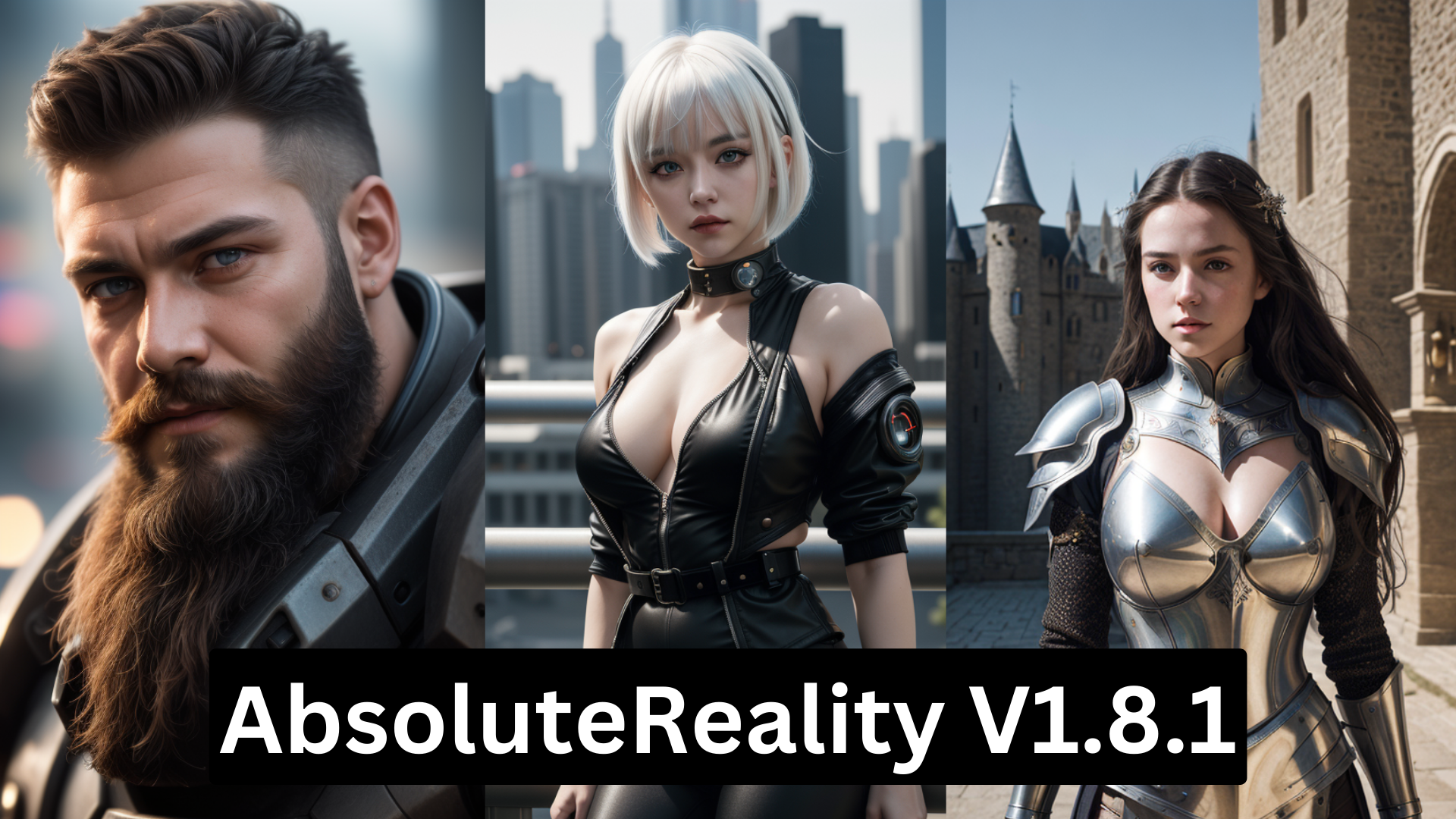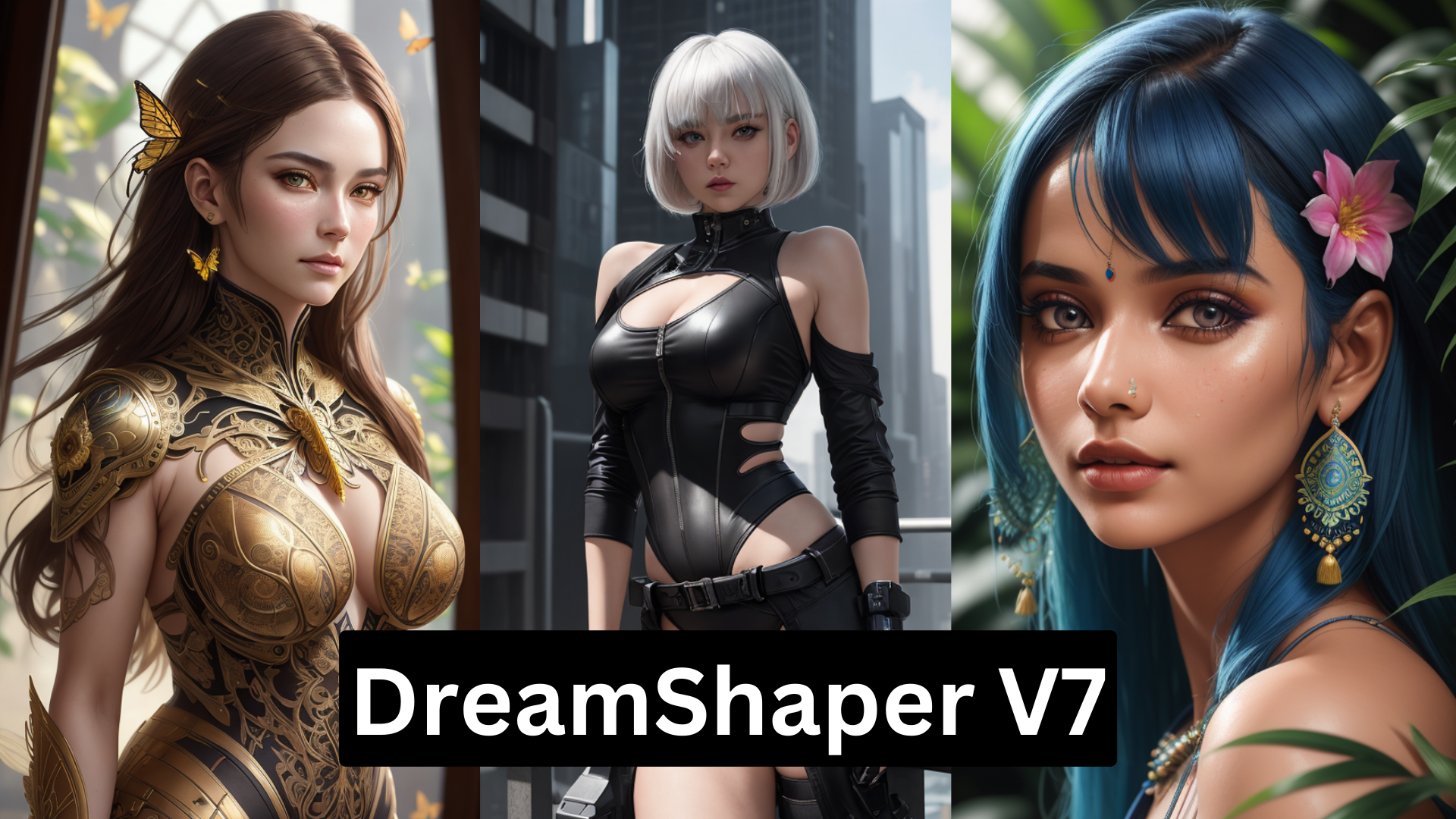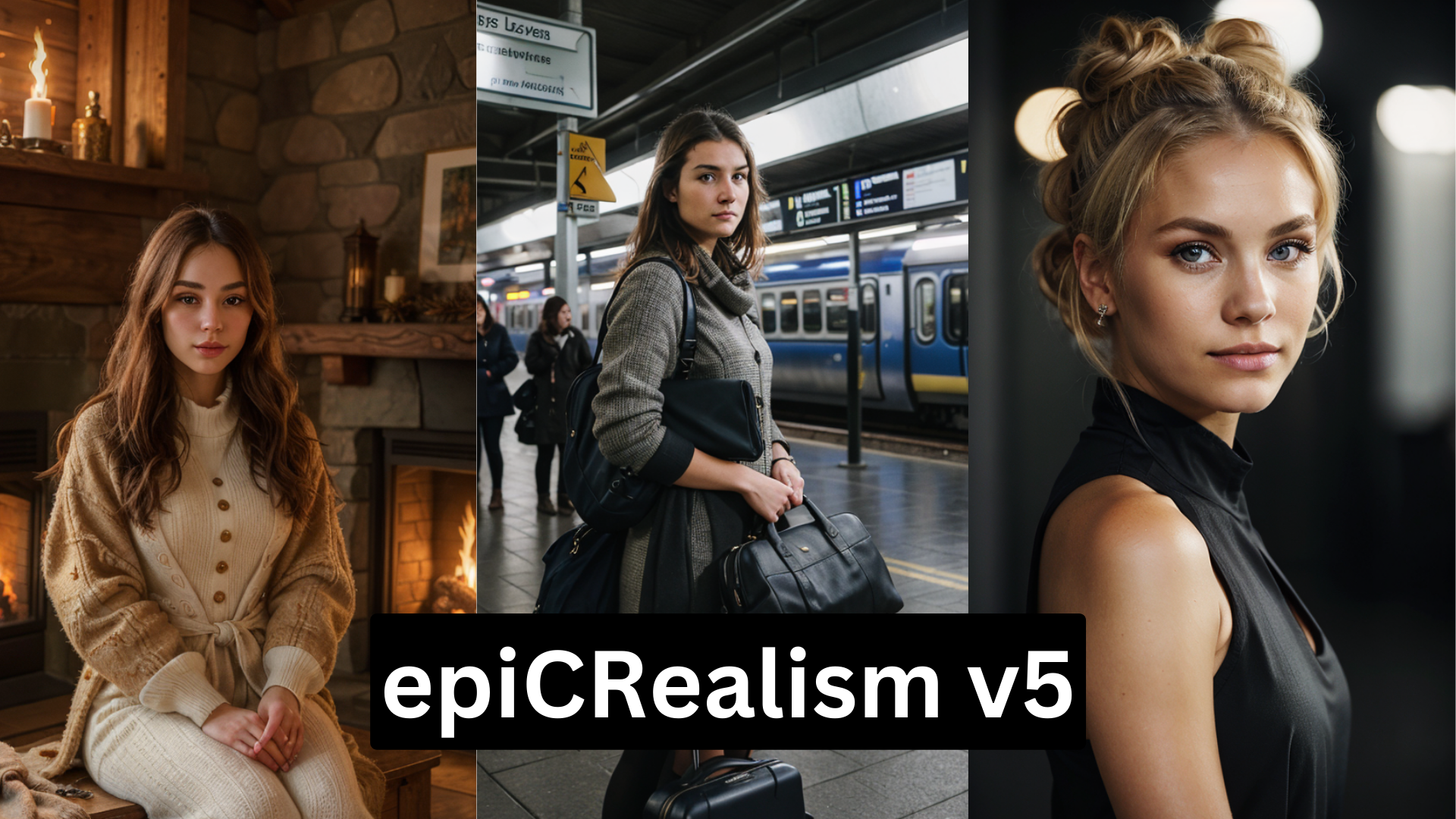absolutereality-v1-8-1
Maintainer: pagebrain

20

| Property | Value |
|---|---|
| Run this model | Run on Replicate |
| API spec | View on Replicate |
| Github link | View on Github |
| Paper link | View on Arxiv |
Create account to get full access
Model overview
The absolutereality-v1-8-1 model is a text-to-image AI model developed by pagebrain. It is a variation of the Stable Diffusion model, with a focus on generating realistic and detailed imagery. The model utilizes a T4 GPU, negative embeddings, and techniques like img2img and inpainting to produce high-quality images. It is similar to other pagebrain models like dreamshaper-v8, epicrealism-v4, epicphotogasm-v1, epicrealism-v5, and realistic-vision-v5-1, all of which share these key features.
Model inputs and outputs
The absolutereality-v1-8-1 model accepts a variety of inputs, including a text prompt, an optional input image for img2img or inpainting, and various settings like the image size, number of outputs, and guidance scale. The model can generate up to 4 output images based on the provided inputs.
Inputs
- Prompt: The text prompt that describes the desired image.
- Negative Prompt: Specifies things to not see in the output, using supported embeddings like
realisticvision-negative-embedding,BadDream,EasyNegative, and others. - Image: An optional input image for img2img or inpainting mode.
- Seed: A random seed value, which can be left blank to randomize.
- Mask: An optional input mask for inpainting mode, with black areas preserved and white areas inpainted.
- Width/Height: The desired width and height of the output image, up to a maximum of 1024x768 or 768x1024.
- Prompt Strength: The strength of the prompt when using an input image, with 1.0 corresponding to full destruction of the input image.
- Num Outputs: The number of images to generate, up to a maximum of 4.
- Guidance Scale: The scale for classifier-free guidance, which controls the balance between the prompt and the model's learned priors.
- Num Inference Steps: The number of denoising steps to perform, up to a maximum of 500.
- Safety Checker: A toggle to enable or disable the safety checker, which filters out potentially unsafe content.
Outputs
- Image: The generated image(s) in URI format.
Capabilities
The absolutereality-v1-8-1 model is capable of generating high-quality, realistic images based on text prompts. It can also perform img2img and inpainting tasks, allowing users to generate new images based on existing ones or to fill in missing or damaged areas of an image. The model's use of negative embeddings and safety checking helps to ensure that the generated images are appropriate and free of undesirable content.
What can I use it for?
The absolutereality-v1-8-1 model can be used for a variety of creative and commercial applications, such as generating concept art, product visualizations, and photo-realistic scenes. Its versatility and attention to detail make it a valuable tool for artists, designers, and anyone looking to create high-quality, visually striking imagery. Companies may also find use for the model in areas like advertising, marketing, and product development, where compelling visuals are essential.
Things to try
One interesting aspect of the absolutereality-v1-8-1 model is its ability to generate images with a strong sense of realism and attention to detail. Users may want to experiment with prompts that challenge the model to depict intricate scenes, such as detailed landscapes, intricate machinery, or realistic human subjects. The model's inpainting capabilities also offer opportunities to explore more complex image editing and manipulation tasks, such as repairing damaged photographs or seamlessly incorporating new elements into existing images.
This summary was produced with help from an AI and may contain inaccuracies - check out the links to read the original source documents!
Related Models

dreamshaper-v7

1
The dreamshaper-v7 model is a powerful AI-powered image generation system developed by pagebrain. It is similar to other models created by pagebrain, such as dreamshaper-v8, deliberate-v3, epicphotogasm-v1, realistic-vision-v5-1, and cyberrealistic-v3-3. These models share common capabilities, such as using a T4 GPU, leveraging negative embeddings, supporting img2img and inpainting, incorporating a safety checker, and utilizing KarrasDPM and pruned fp16 safetensors. Model inputs and outputs The dreamshaper-v7 model accepts a variety of inputs, including a text prompt, an optional input image for img2img or inpainting, and various configuration options. The outputs are one or more generated images that match the provided prompt and input. Inputs Prompt**: The text prompt that describes the desired image. Image**: An optional input image for img2img or inpainting mode. Mask**: An optional mask for inpainting mode, where black areas will be preserved and white areas will be inpainted. Seed**: An optional random seed value for reproducibility. Width and Height**: The desired width and height of the output image. Scheduler**: The denoising scheduler to use, with the default being K_EULER. Num Outputs**: The number of images to generate, up to a maximum of 4. Guidance Scale**: The scale for classifier-free guidance, which controls the balance between the prompt and the model's own "imagination". Safety Checker**: A toggle to enable or disable the safety checker, which can filter out potentially unsafe content. Negative Prompt**: Text describing things the model should avoid generating in the output. Prompt Strength**: The strength of the prompt when using an input image, where 1.0 corresponds to fully replacing the input image. Num Inference Steps**: The number of denoising steps to perform during the generation process. Outputs One or more generated images that match the provided prompt and input. Capabilities The dreamshaper-v7 model is capable of generating high-quality, photorealistic images based on text prompts. It can also perform img2img and inpainting tasks, where an existing image is used as a starting point for generation or modification. The model's safety checker helps ensure the output is appropriate and avoids potentially harmful or explicit content. What can I use it for? The dreamshaper-v7 model can be used for a variety of creative and practical applications, such as: Generating concept art or illustrations for games, books, or other media Creating unique and personalized images for social media, marketing, or advertising Enhancing existing images through inpainting or img2img capabilities Exploring and visualizing creative ideas and concepts through text-to-image generation As with any powerful AI tool, it's important to use the dreamshaper-v7 model responsibly and ethically, considering the potential implications and impacts of the generated content. Things to try One interesting aspect of the dreamshaper-v7 model is its ability to generate visually striking and imaginative images based on even the most abstract or unusual prompts. Try experimenting with prompts that combine seemingly unrelated concepts or elements, or that challenge the model to depict surreal or fantastical scenes. The model's integration of negative embeddings and safety features also allows for more nuanced and controlled generation, giving users the ability to refine and fine-tune the output to their specific needs.
Updated Invalid Date

realistic-vision-v5-1

6
The realistic-vision-v5-1 model is a text-to-image AI model developed by the creator pagebrain. It is similar to other pagebrain models like dreamshaper-v8 and majicmix-realistic-v7 that use negative embeddings, img2img, inpainting, and a safety checker. The model is powered by a T4 GPU and utilizes KarrasDPM for its scheduler. Model inputs and outputs The realistic-vision-v5-1 model accepts a text prompt, an optional input image, and various parameters to control the generation process. It outputs one or more generated images that match the provided prompt. Inputs Prompt**: The text prompt describing the image you want to generate. Negative Prompt**: Specify things you don't want to see in the output, such as "bad quality, low resolution". Image**: An optional input image to use for img2img or inpainting mode. Mask**: An optional mask image to specify areas of the input image to inpaint. Seed**: A random seed to use for generating the image. Leave blank to randomize. Width/Height**: The desired size of the output image. Num Outputs**: The number of images to generate (up to 4). Guidance Scale**: The strength of the guidance towards the text prompt. Num Inference Steps**: The number of denoising steps to perform. Safety Checker**: Toggle whether to enable the safety checker to filter out potentially unsafe content. Outputs Generated Images**: One or more images matching the provided prompt. Capabilities The realistic-vision-v5-1 model is capable of generating highly realistic and detailed images from text prompts. It can also perform img2img and inpainting tasks, allowing you to manipulate and refine existing images. The model's safety checker helps filter out potentially unsafe or inappropriate content. What can I use it for? The realistic-vision-v5-1 model can be used for a variety of creative and practical applications, such as: Generating realistic illustrations, portraits, and scenes for use in art, design, or marketing Enhancing and editing existing images through img2img and inpainting Prototyping and visualizing ideas or concepts described in text Exploring creative prompts and experimenting with different text-to-image approaches Things to try Some interesting things to try with the realistic-vision-v5-1 model include: Exploring the limits of its realism by generating highly detailed natural scenes or technical diagrams Combining the model with other tools like GFPGAN or Real-ESRGAN to enhance and refine the output images Experimenting with different negative prompts to see how the model handles requests to avoid certain elements or styles Iterating on prompts and adjusting parameters like guidance scale and number of inference steps to achieve specific visual effects
Updated Invalid Date

epicrealism-v4

5
The epicrealism-v4 model is a powerful AI model developed by Replicate creator pagebrain. It is part of a series of epiCRealism and epiCPhotoGasm models, which are designed to generate high-quality, realistic-looking images. The epicrealism-v4 model shares similar capabilities with other models in this series, such as dreamshaper-v8, realistic-vision-v5-1, and majicmix-realistic-v7, all of which are also created by pagebrain. Model inputs and outputs The epicrealism-v4 model accepts a variety of inputs, including text prompts, input images for img2img or inpainting, and various parameters to control the output, such as seed, width, height, and guidance scale. The model can generate multiple output images in response to a single prompt. Inputs Prompt**: The input text prompt that describes the desired image. Negative Prompt**: Specifies things to not see in the output, using supported embeddings. Image**: An input image for img2img or inpainting mode. Mask**: An input mask for inpaint mode, where black areas will be preserved and white areas will be inpainted. Seed**: The random seed to use for generating the output. Width and Height**: The desired width and height of the output image. Num Outputs**: The number of images to generate. Prompt Strength**: The strength of the prompt when using an init image. Num Inference Steps**: The number of denoising steps to perform. Guidance Scale**: The scale for classifier-free guidance. Safety Checker**: A toggle to enable or disable the safety checker. Outputs Output Image**: The generated image(s) that match the input prompt and parameters. Capabilities The epicrealism-v4 model is capable of generating high-quality, realistic-looking images based on text prompts. It can also perform img2img and inpainting tasks, allowing users to generate new images from existing ones or fill in missing parts of an image. The model incorporates various techniques, such as negative embeddings, to improve the quality and safety of the generated outputs. What can I use it for? The epicrealism-v4 model is well-suited for a variety of creative and practical applications. Users can leverage its capabilities to generate realistic-looking images for marketing, design, and art projects. It can also be used for tasks like photo restoration, object removal, and image enhancement. Additionally, the model's safety features make it suitable for use in commercial and professional settings. Things to try One interesting aspect of the epicrealism-v4 model is its ability to incorporate negative embeddings, which can help to avoid the generation of undesirable content. Users can experiment with different negative prompts to see how they affect the output and explore ways to fine-tune the model for their specific needs. Additionally, the model's img2img and inpainting capabilities allow for a wide range of creative possibilities, such as combining existing images or filling in missing elements to create unique and compelling compositions.
Updated Invalid Date

epicrealism-v5

9
The epicrealism-v5 model is a high-performance AI model created by the team at Pagebrain. It is part of a series of epiCRealism models, which also includes models like epiCRealism v2 and epiCPhotoGasm v1. The epicrealism-v5 model is built on a T4 GPU and uses various negative embeddings, enabling it to perform tasks like img2img, inpainting, and safety checking. Model inputs and outputs The epicrealism-v5 model accepts a variety of inputs, including an input prompt, an optional input image for img2img or inpainting tasks, and a seed value. It can generate multiple output images based on these inputs, with configurable parameters like guidance scale and number of inference steps. Inputs Prompt**: The text prompt that describes the desired output image. Image**: An optional input image for img2img or inpainting tasks. Seed**: A random seed value to control the generation process. Negative Prompt**: Specify things to not see in the output, using supported embeddings. Prompt Strength**: The strength of the prompt when using an input image. Outputs Images**: The generated output images, in the form of image URIs. Capabilities The epicrealism-v5 model is capable of generating high-quality, photorealistic images based on text prompts. It can also perform img2img and inpainting tasks, allowing users to modify existing images or fill in missing areas. The model includes a safety checker to help filter out potentially unsafe or inappropriate content. What can I use it for? The epicrealism-v5 model can be useful for a variety of creative and commercial applications, such as concept art, product visualization, and photo editing. Its img2img and inpainting capabilities make it particularly well-suited for tasks like restoring old or damaged photos, adding elements to existing images, or creating photo-realistic visualizations of products or designs. Things to try One interesting aspect of the epicrealism-v5 model is its ability to generate highly detailed and realistic images while avoiding common pitfalls like distorted anatomy or uncanny facial features. Try experimenting with prompts that describe specific, detailed scenes or objects, and see how the model handles the challenge. You can also try using the img2img and inpainting features to enhance or modify existing images in creative ways.
Updated Invalid Date